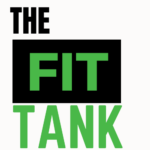Good morning and welcome back to Snack Cast. We’re coming at you today with heart rate zones. What are they? Why are they important? Why do we care? How are they useful?
Heart rate zones are fun. They are fun. Do you have a story about Bob? Yeah, Bob, Sarah, your name doesn’t really matter. Friend of a friend. I know a guy. Bob decides that he wants to go out and run a half marathon and finally get in shape. I want to run a half marathon as my goal. I start on my plan, print it out, or download it to an app and I get out there and I get after it. Things are going good. Day one, day two, day three, I’m following right along. Here comes day four and day five, and all of a sudden here comes a cold. I’m sick. I overdid it. I got to take a week off. And then I’m back in that reset mode.
You keep saying I but I thought we were talking about Bob. We were. So Bob makes it to day five going in aggressively right out of the gate. He’s probably lucky he didn’t have some other injury. Right. But he blew his heart rate too often and over-stressed his cardiovascular system. That’s correct. And it actually led to him being sick. Yes. And it can, it doesn’t have to be a cold per se. It could be like we talked about the other day, it can be an overuse injury.
Heart rate zone training, is a customized way of organizing your workouts, maybe organizing is a bad word, but customizing your workouts to the plan that you’re about to achieve. There are advanced models but the way it works at the very basic level is there are three heart rate zones. It’s a warm-up, a fat-burning mode, and an anaerobic zone.
I actually brought a visual. The whole premise of it is to stay in one of those three zones. Figure out the zone, you want to start in, stay in that zone, and allow the body to work up to pushing into other zones.
There are lots of plans that you can download on the internet for heart rate zone training. The plan may say, I want you to stay in the aerobic zone today. What that means is you’re going to operate probably between 70 and 80%, of what your maximum heart rate should be. I’ll give you an example of how it worked for me. When I was training to do a half Ironman, I actually had a heart rate zone training program. It would say I want you to run six miles today, and you’d go out and run those six miles, but I want you to stay in these zones. Let’s say the heart rate zone was between 125 and 150. Using my watch, if all of a sudden I hit 155, I would actually be forced to walk. It would force me to dial it back, so I would rest until 125, and then start running again.
Whether you’re running, walking, or whatever the point is to go hard, as hard as you’re comfortable, until you reach the max. And then slow down, and settle your pace a little bit. Until you hit the minimum and keep your heart rate operating in that high-low window.
What if I don’t have a plan? What if I am just trying to get healthy and I’m not training for something? I would maybe do something like, stay in the fat-burning aerobic mode three days a week. Then other days do a recovery zone where I stay in that base zone and then one day a week, have a zone where you’re kind of going all out.
Okay. I used it once. Specifically to train for a half. But I really didn’t have a plan. There wasn’t a structure. It was a buddy of mine that said, Hey, why don’t you target a zone, stay in the zone, run until you hit the peak, and walk till you hit the minimal? That’s what I did. And it was amazing how fast I worked up to being able to push out of that zone. I’m not sure what the medical sciences behind that are. Everything’s improving your muscle efficiency and I guess it’s a gradual improvement. You’re not overstressing.
So real quick, I brought a visual, there are a million ways to do this. There are calculators all over the internet, fancy watches, and all kinds of stuff. The simplest way is to calculate your maximum heart rate zone. First, we will calculate the maximum, which is 220 minus your age. Now your level of fitness can dictate, maybe you can go a little higher than this, maybe you should go a little lower than this, again, kind of do your own homework, we’re not doctors. But to Kevin’s point about the fat burn zone is one of those zones is typically 60 to 70%. So for me at 49 years old, based on the simple math, I would want to stay between 103 and 120 beats per minute to stay in that fat burn zone. That’s where you can log lots of miles, you can do a ton of good without ever leaving that zone. You’d be surprised how easy it is to get going and blow through 120 and then force yourself, that’s the painful part, forcing yourself back underneath that. Yeah, you say painful but the point is to go long term, it’s building that long-distance engine. The amazing thing is when I first started doing this, I’d be 30 seconds in and I’d hit the max. A month later, I’m 10 minutes in and still not hitting the max and I’m like alright.
We’re out of time, I hope it was valuable. Hit us up in the Facebook group or email us at Snackcast@yes.fit with ideas or questions.


